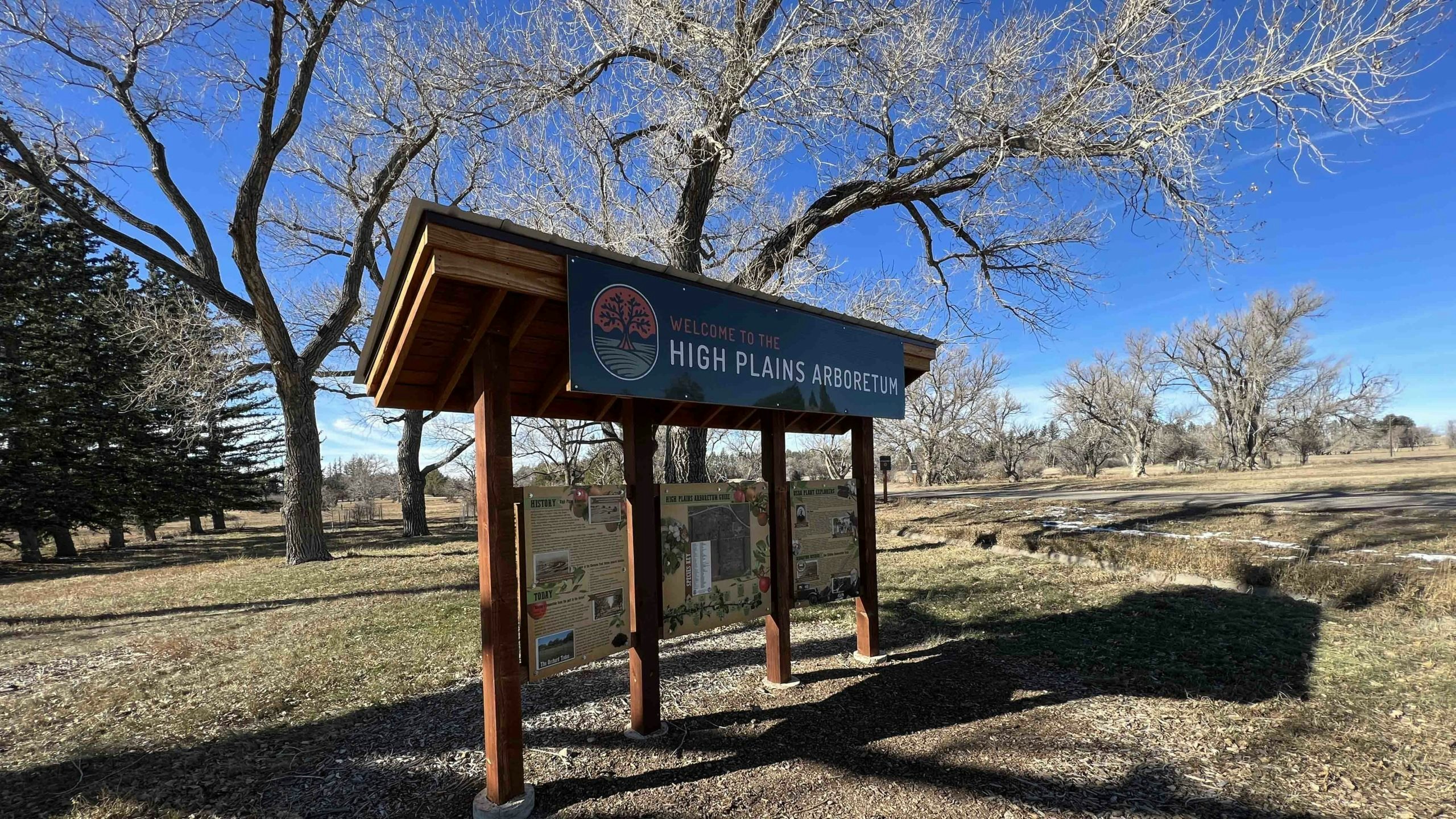High Plains Arboretum didn’t get its sought-after designation as a state historic site during the most recent legislative session, but that doesn’t mean everything is at a standstill for the project.
The Wyoming Legislature did approve $3.5 million for eventual improvements at the site, and the Wyoming Attorney General’s Office has advised Wyoming State Parks that it can still use some of that money to pursue a master plan and a facilities condition assessment.
Cheyenne Botanic Gardens Horticulturist Jessica Friis told Cowboy State Daily that State Parks will be working out an agreement with Cheyenne, the Board of Public Utilities, U.S. Department of Agriculture and other partners to outline steps to make that happen.
The memorandum of understanding will also serve as a “trigger” for management and operations at the arboretum, if and when legislation does pass to give the 877-acre site its official historic designation.
“We are very grateful to the legislators who supported this funding for the High Plains Research Station and Arboretum state historic site in the budget bill this year,” Friis said. “These agreements and plans are vital for preserving the historic nature of the state, while allowing current operation to continue, and planning for the future. We are excited to be moving forward in our partnership with Wyoming State Parks.”
Christina Bird with Wyoming State Parks, Historic Site and Trails told Cowboy State Daily that she sees a lot of exciting opportunities for the site, once its historic structures are restored.
“This would be a wonderful place to feature and showcase Wyoming’s history,” Bird said in an email. “Wyoming State Parks, Historic Site and Trails remains committed to working with our legislators and our partners on the High Plains Research Station to try to make this a reality.”
On the city’s side of things, the Community Recreation and Events Department has already asked for a full-time permanent position for the arboretum budget for July 2024 to June 2025.
Growing A Greenhouse
One of the best opportunities for statewide synergy are the greenhouses on the property, which could be used to grow trees, shrubs and vines that work well in Wyoming.
“We would work with our partners to determine what needs to be grown in those particular greenhouses,” Bird has told Cowboy State Daily. “And the city of Cheyenne has expressed a lot of excitement about continuing propagation work for the trees and the things that can be cultivated from the arboretum.”
Work at the arboretum has long focused on identifying the plants that grow well in Wyoming and other arid Great Plains states, and that’s work that could potentially continue under the new partnership.
Some of the trees at the site were planted in the early 1930s, making them nearly 100 years old. They’ve not only withstood whatever researchers had to throw at them, but after the mission ended, they survived decades of neglect and drought as well, making them true pioneers.
Many of those older trees still have signs on them that identify both the variety and the year the variety was planted.
Among the best-known of these older trees still growing at the arboretum, according to Friis, is a willow that was found near Encampment.
The oldest tree, on the other hand, is a Kentucky coffee tree which, while not native to Wyoming, is native to the United States.
There are also things like Woodward junipers, an Oklahoma tree that has an upright, non-spreading habit without needing any pruning at all, apricot trees from Siberia and Russia, and Tartarian and Amur maple trees.
The latter is quite popular for its red leaves — but hard to find. It’s one of the trees Friis has been working to propagate at the Cheyenne Botanic Gardens in hopes of selling during the annual plant sale.
Not Just Trees
Not all of the plants the arboretum tested were trees. In fact, over the years the arboretum served as a horticultural research station where more than 2,000 fruit varieties, 1,300 woody ornamental plants, and 8,000 vegetables were tested at the station, along with 200 species of trees and shrubs.
Some of those plants still have the name “Cheyenne” attached to them in seed catalogs and nurseries, like the Cheyenne mock orange.
Cheyenne Botanic Gardens founder Shane Smith has told Cowboy State Daily the Cheyenne Arboretum’s work is spread out across a number of Great Plains states.
“You probably can’t go to any High Plains town and not see something that was a result of work done in Cheyenne,” he said. “And the reason for Cheyenne being more important than other stations is because they quickly realized that Cheyenne was the worst, most challenging climate of the three (Great Plains) stations.”
That had other research stations throughout the Great Plans sending Cheyenne new strawberry, raspberry, tomato or other popular vegetable varieties to see how it would do in a truly challenging environment.
“Cheyenne became the acid test for plants,” Smith said. “If something came from Cheyenne, they knew it could probably survive from Montana to Amarillo.”
The wide variety of plants at the arboretum was built through world travels by botanists, who Smith describe as the “Indian Joneses” of the plant world.
They went to war zones and dodged bullets, and they climbed mountains with Sherpas in places like Mongolia and Siberia, to search for the hardiest of hardy plants, that could survive deep cold winters and high wind environments.
Renée Jean can be reached at renee@cowboystatedaily.com.





